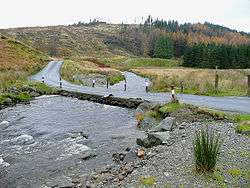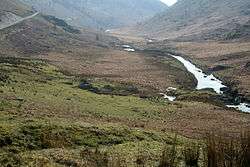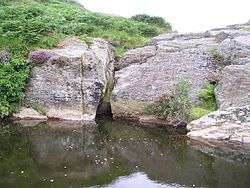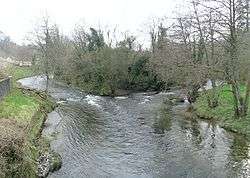Afon Irfon


Afon Irfon (the River Irfon) is a river in Powys, Wales. It flows from the upper slopes of Bryn Garw in the Cambrian Mountains, through the Abergwesyn Valley, past the Nant Irfon National Nature Reserve in the hills above the village of Abergwesyn, and through Llanwrtyd Wells to its confluence with the River Wye at Builth Wells. The source of the Irfon is in the so-called Desert of Wales.
Afon Irfon is the listed name of the Site of Special Scientific Interest in the upper reaches of the river Irfon Powys, Wales.
Description

From its source at 540 metres AMSL on the upper slopes of Bryn Garw in the Cambrian Mountains the Irfon flows southwards past the foot of the Devil's Staircase, along the Abergwesyn Valley, through the scenic Camddwr Bleiddiad (Wolves' Gorge), and into the Wolves Pool. It then flows past the forest of Sessile Oaks (Quercus petraea) to join the Afon Gwesyn at Abergwyesn where it passes beneath the Irfon Forest and the Nant Irfon National Nature Reserve towards Llanwrtyd Wells. Then it flows eastward through Llangammarch Wells, and Garth to join the River Wye at Builth Wells (Llanfair ym Muallt). An overall length of approximately 28 miles.[1]
The Irfon defines the northern limit of the Mynydd Epynt area between Llanwrtyd Wells and Builth Wells.
History

The river is famous in Welsh history for the fact that it was on its banks, in the vicinity Cilmeri, that Llywelyn ap Gruffudd, Prince of Wales, was killed on 11 December 1282.
Literature
The Abergwesyn Valley and the legend of the boy failing to safely leap the Wolves' Gorge (Camddwr Bleiddiad) were described by George Borrow in his 1862 travel publication Wild Wales: Its People, Language and Scenery.
See also
References
| Wikimedia Commons has media related to Afon Irfon. |
Coordinates: 52°14′13″N 3°42′54″W / 52.237°N 3.715°W